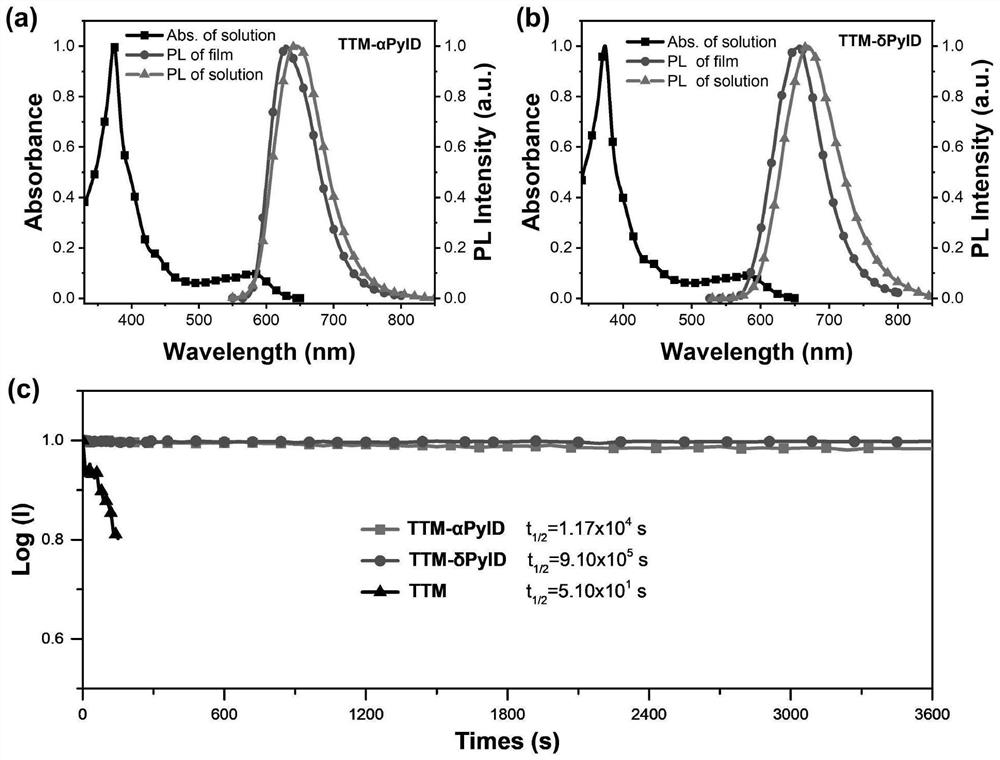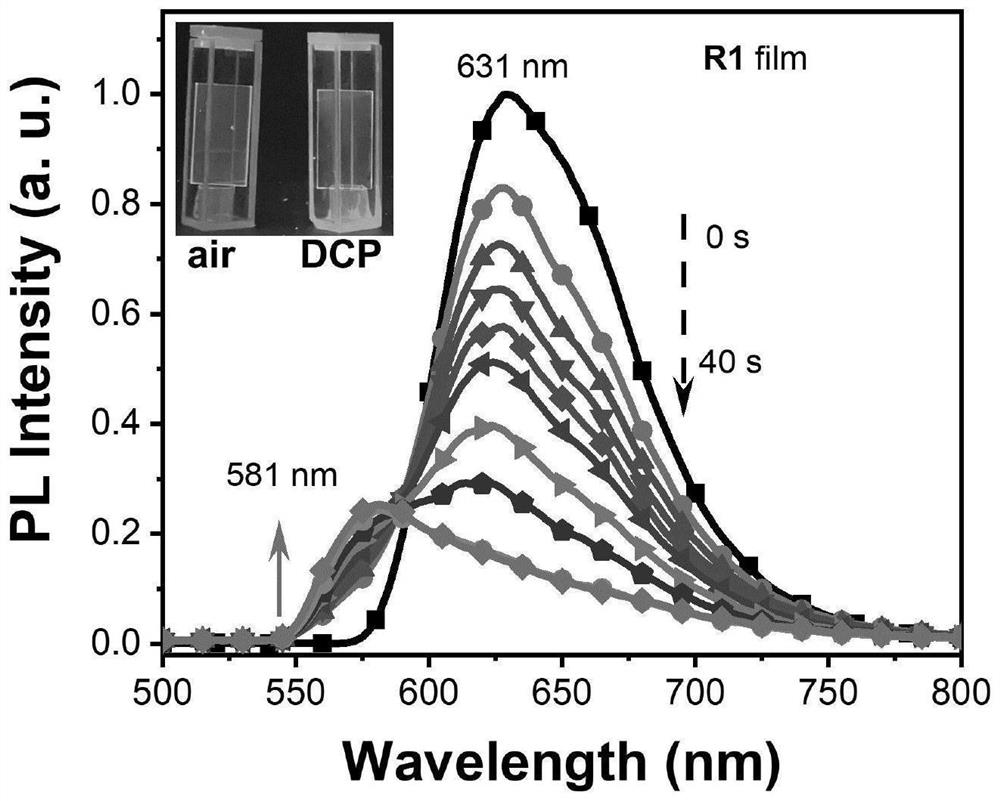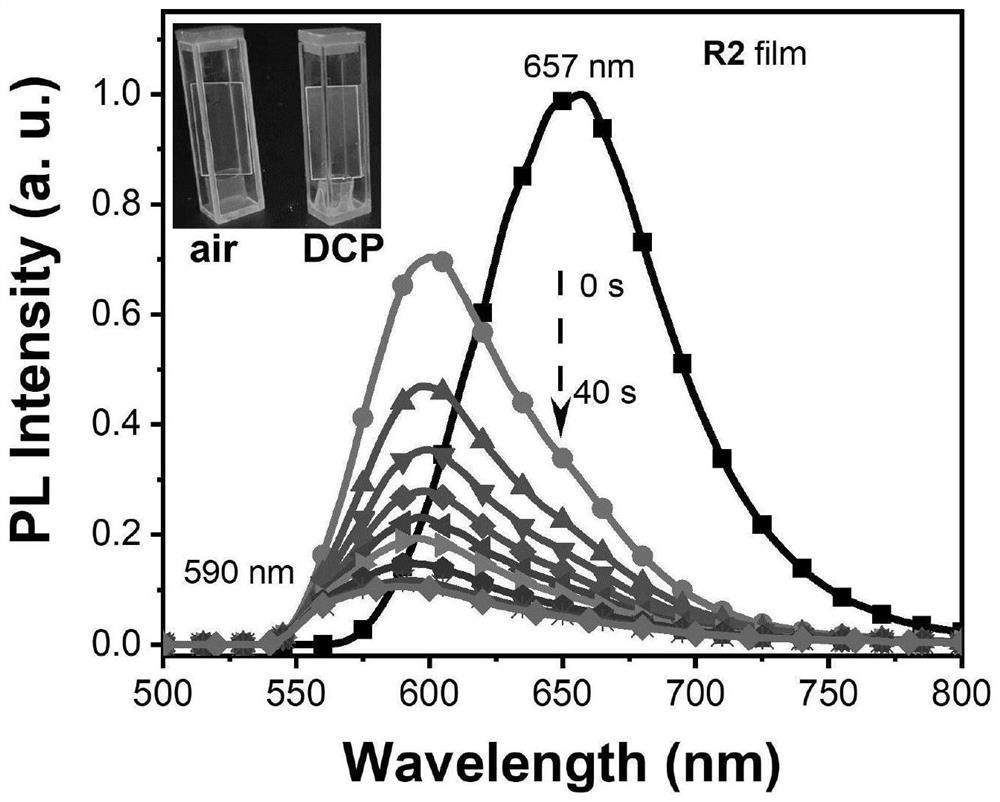Application of organic light-emitting free radical material in gas-phase fluorescence detection of nerve poison, fluorescent film and application of fluorescent film
A nerve agent and fluorescence detection technology, applied in the field of fluorescence sensing, can solve the problems of poor photostability of fluorescent probes, and achieve the effects of visual detection, excellent photostability, and high fluorescence quenching rate
- Summary
- Abstract
- Description
- Claims
- Application Information
AI Technical Summary
Problems solved by technology
Method used
Image
Examples
preparation example Construction
[0054] The present invention provides the preparation method of the fluorescent film described in the above technical solution, comprising the following steps:
[0055] The host material, the guest material and the organic solvent are mixed to form a film to obtain a fluorescent film.
[0056] In the present invention, the parent material, the guest material and the organic solvent are mixed to obtain a mixed material. The present invention does not specifically limit the manner in which the parent material, the guest material and the organic solvent are mixed, and a method well known to those skilled in the art can be used to achieve sufficient mixing of the materials.
[0057] After the mixed material is obtained, the present invention forms the mixed material into a film to obtain a fluorescent film. In the present invention, the method for forming the film preferably includes:
[0058] The mixed material is coated on one side of a substrate, and after drying, a fluoresce...
Embodiment 1
[0063] To prepare a fluorescent film based on an organic light-emitting radical material R1 (with a structure represented by formula R1), the steps are as follows:
[0064] Dissolve 1 mg of organic light-emitting radical material R1 and 19 mg of polymethyl methacrylate in 1 mL of o-dichlorobenzene to obtain a mixed material solution; ultrasonically clean the quartz glass with water, ethanol, acetone and toluene for 30 min in turn to remove the quartz glass Impurities on the surface; 60 μL of the mixture was added dropwise to the cleaned quartz glass surface, and a film was formed by spin coating using a glue homogenizer. Vacuum-drying at 45°C for 60 min to obtain a fluorescent film based on the organic light-emitting radical material R1, denoted as R1 fluorescent film.
Embodiment 2
[0066] According to the method of Example 1, the only difference is that the organic light-emitting radical material R1 is replaced with an organic light-emitting radical material R2 (with the structure shown by formula R2), and finally a fluorescent film based on the organic light-emitting radical material R2 is prepared. , denoted as R2 fluorescent film.
PUM
| Property | Measurement | Unit |
|---|---|---|
| thickness | aaaaa | aaaaa |
Abstract
Description
Claims
Application Information
 Login to View More
Login to View More - R&D Engineer
- R&D Manager
- IP Professional
- Industry Leading Data Capabilities
- Powerful AI technology
- Patent DNA Extraction
Browse by: Latest US Patents, China's latest patents, Technical Efficacy Thesaurus, Application Domain, Technology Topic, Popular Technical Reports.
© 2024 PatSnap. All rights reserved.Legal|Privacy policy|Modern Slavery Act Transparency Statement|Sitemap|About US| Contact US: help@patsnap.com










